- Home
- News & Events
- News Blog
- Lessons from Auschwitz
Lessons from Auschwitz
 News
News

In February 2023, 6 students from St Charles Sixth Form College were selected to participate in the Lessons from Auschwitz project organised by the Holocaust Education Trust. The students involved were Yr. 13 students Maria Vasalie and Melanie Sinani and Year 12 students Keira Bancroft, Zachary Creelman, Samir Gawel and Petro Melnyk. All felt honoured to represent the College in this unique educational experience, alongside other students from schools and colleges in the South West Region. They were accompanied by staff member Harry Cooper.
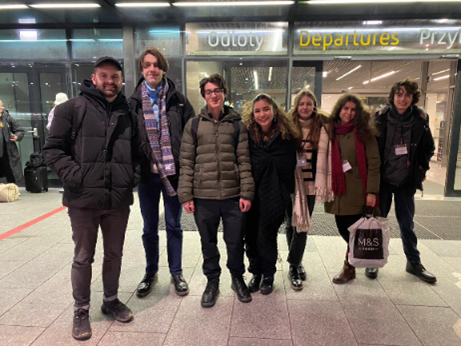
The project consists of four parts and includes a one day visit to the former Nazi concentration and death camp Auschwitz-Birkenau; the principal and most notorious of the concentration and extermination camps established by the Nazi regime during World War 11. In addition to the visit, they attended an orientation seminar to prepare for the visit and learn about pre-war Jewish life and post the visit they attended a follow-up seminar where they heard holocaust survivor Steven Frank speak of the horrors of his experiences and explore the contemporary relevance of the Holocaust, all leading into their Next Steps project where they will disseminate the lessons learnt with the college community in the autumn term. Throughout the project the students were excellent ambassadors for the college. Although it was a challenging experience due to its emotional intensity and impact, they found it utterly rewarding.
Please read the recollections of their journeys of learning and exploration below which are both insightful and poignant:
Keira Bancroft
I was very appreciative of being given this opportunity by the college to partake in this project. I felt grateful because I knew it was a chance that few people get, to be able to see, firsthand, sites that we have heard being referenced throughout our lives and hearing about the stories of people who experienced life at these camps. Our tour guide provided detailed information of our surroundings at Auschwitz I and Auschwitz II-Birkenau, such as the many bricked buildings and their purposes, and vividly described what it was like for prisoners to be held there.
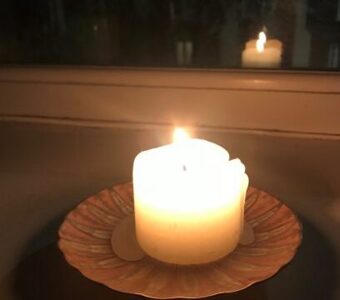
The atmosphere in the camps was eerie and the freezing weather matched the day’s mood. A key poignant moment for me which stands out in my mind was seeing the sign at the entrance to Auschwitz; an image so many of us recognise is association with the camp. Similar to this, witnessing the railroad tracks that led to Auschwitz II struck me and made me stop and think. We were brought together at the end of the day to reflect on our experience, and the speeches that were made were extremely powerful and moving. I also appreciated being able to light a candle at the site before heading back.
Zachary Creelman
The opportunity to visit Auschwitz-Birkenau was unexpected; I knew before I went that I would never forget the visit. Before the trip I didn’t much bother to think how I would react to the site as I thought it would be best to see how I reacted when I actually got there, but I did think that I would feel something knowing that I was walking in the same place that both Nazis and victims of the Holocaust walked. The seminar before the trip was useful in putting Auschwitz into perspective because we learned about pre-war Jewish life, since it was this way of life which was attacked it was useful to learn about.
After an extremely early start I joined 5 other students and a member of staff at Gatwick airport, then we took a plane with 180 other students from across London form Gatwick to Krakow. When we left Krakow airport, it was heavily snowing and for the rest of the day the weather would switch from snowing to hailing to raining. This harsh weather would help me realise the horrible conditions that victims of the holocaust had to endure.
We took a coach to the town of Oszwiencim, where Auschwitz is. It was a nice, peaceful and beautiful town. We saw a church, and next to the church was the site of a great synagogue that was destroyed by the Nazis. Rabbi Marcus told us about the importance of this great synagogue to Jewish life in Oszwiencim or Oshpitzin in Yiddish and how, in this small Jewish majority town, both Christians and Jews lived and worked together and worshiped in the same vicinity to each over. Coming from London I often saw multiculturalism as a part of our identity as a city, obviously over time our ideas and identities change, but what I have realised is that forcefully removing a certain group of people from society doesn’t just affect those people who are removed, but it also affects the people around them. By removing one group or aspect from society, the whole society and its identity is fundamentally changed.
Auschwitz 1 was my first proper experience of Auschwitz. We were guided by a man named Chris who told us about the history and events of the place. Most of the things to see in Auschwitz 1, mainly inside of the buildings, were ‘museumised’ but it was still a profound experience. When we got to the entrance I saw the “arbeit macht frei” sign which stunned me when I first saw it, but we were quickly informed that it was a remake. I noticed that the site was massive and very tiring to walk around. Whilst we were walking around our guide told us some of the things they would make prisoners do like standing in roll all for 19 hours because one of the prisoners was missing. We also saw some gallows where they would hang prisoners if one escaped in order to set an example. One of the stories that hit me quite hard was where a prisoner escaped so they were rounding up 10 prisoners to hang, one of the prisoners begged not to be hanged as he had a wife and kids relying on him, so one of the other prisoners volunteered himself to be hanged instead (I believe Chris called him ‘father’ indicating that he was a Christian priests instead of a Jew, but I could be wrong) which he was. Hearing these stories whilst withstanding the elements really put into perspective what the holocaust survivors had to go through. At Auschwitz I we walked past Rudolf Höss’ house as he chose to live near to the camp with his wife and kids. One of the organisers of the trip pointed out how he was just a normal person who chose to make the decision to participate in the holocaust and live next to Auschwitz. We then walked to a gas chamber with a chimney where they would shoot up the ashes. The chamber was a very barren, concrete structure with not much to see except for where they shovelled the bodies into the incinerator in the room next to us and the holes where gas was put into.
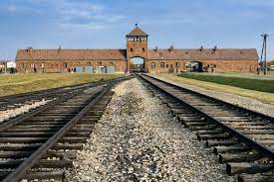
We all know about the famous picture of the railways leading to Auschwitz, but must of us don’t know that that the full name of that place is Auschwitz-Birkenau. Neither did my group and I realised where we were going until we saw Birkenau in the distance; standing on the tracks leading into Birkenau and gazing down at this infamous site was a very strange feeling. However, just like the Jews in the cattle trains we did not know what lay ahead. I feel that Birkenau was a lot more impactful as Auschwitz 1 because it has been left as it was, it is a much more open and bigger dire and we were starting to feel tired by the time we got there. The living quarters were terrible. Each building was open at the bottom meaning that the prisoners were constantly expanded to the elements, the laboratories were designed and organised to be a brutal as possible, each person only had 30 seconds to relieve themselves we were told and the sleeping quarters were rough and would have been very cramped. When we were in the sleeping quarters, Rabbi Marcus told us a story where someone smuggled a prayer book into the sleeping quarters and they had a prayer session for a couple of minutes before they went to sleep, if they could. We were also told that no one who entered Birkenau when it first started operating survived till the liberation of Auschwitz in 1945 which isn’t the same in Auschwitz 1. We then saw the ruins of a destroyed gas chamber where there wasn’t much to see but there was time to reflect, we were then told about how some people berried messages in the ground so that they won’t be forgotten after they died.
At Birkenau we went into a building where the prisoners were made to have extremely quick showers in a mixed gender area, but that wasn’t the main thing we saw. We went into this room where there were pictures and stories of Jews before and during the war, then me and some others read out some poems to everybody. The Poem I read was called “my key”, it was a short poem about someone loosing, then finding, their key and it was meant to symbolise death. After that, Rabbi Marcus said a prayer in Hebrew. We then went outside and lit Jewish memorial candles next to memorial plaques. We were allowed to take the candles back home with us so I still have a reminder of the trip with me.
Our tour guide, Chris was very knowledgeable and told us things that we aren’t usually taught like how the last prisoners in Auschwitz were German POWs of the Soviets.
After we got back from Poland and I was in a cab going back home, I started to reflect. I asked some questions that I had never asked before, questions that everyone knew about but not everyone bothered asking.
During the second seminar we got the chance to meet a holocaust survivor named Steven Frank. Meeting him was an amazing experience as his story wasn’t what you would expect. He was a very interesting man with a very interesting family life. He told us that his grandfather was involved with the same company that produced the happy birthday song for instance. During his time in the ghettos he managed to do some Gardening, a love that he still continues to this day, and overall he seemed like quite a happy man in spite of all that had happened. As he had family in England he had many opportunities to leave the Netherlands, but his father refused because he wanted to help disabled people who couldn’t survive the Nazis on their own, he was also a lawyer and helped many Jews escape. His father was the only one in his family that was killed which shows his humanity.
Samir Gawel
Pre:
- Before going we learned about the history of anti-semitism and how it existed long before WWII.
- We talked about how the Holocaust was not restricted to just Germany but took people from all across Europe (many of who died in transport due to poor conditions).
During the visit:
- We learnt of the Individuals that were subject to the Holocaust and how they were lied to from beginning to end.
- We learnt of the various other groups that were also affected by the Holocaust (Poles, Roma and Jehovah's Witnesses to name but a few).
- I was surprised at the fact that Auschwitz 1 felt more like a museum than a memorial which further reinforces the idea that Auschwitz now serves as a place to spread awareness of the terrible thing that once happened there.
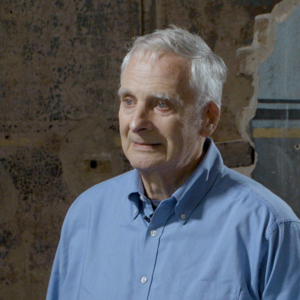
Final thoughts:
- We later heard from a Holocaust survivor in a Zoom presentation held after the trip who told us of his experience as a child during this time. This really helped me to understand how hatred in humans can lead them to actively choose to destroy families, lives and communities.
- From the same Zoom presentation we learned how many people were betrayed by the government or authorities that they once trusted and as a result an unnecessary amount of lives were lost by simple decisions.
- In conclusion the trip was a real learning experience. As often in history we learn of the facts or statistics but with the trip you are able to learn about the stories and lives of individuals (the best way to learn about historical events is through first-hand accounts of those who have experienced them but this is unfortunately not always possible and will one day also not be possible for the events of the Holocaust).
Petro Melnyk
Personally, for me, the topic of the Holocaust is a much broader topic than it might seem. This event was supposed to put an end to any war or genocide once and for all, but the world community did not draw any conclusions and wars and genocide still continue in the 21st century, and that is totally unacceptable, this is why we need to remember about all horrible things that have happened to mankind throughout history to prevent this in the future.

I am from Ukraine and now there is a war in my country, and the Russians are doing to the Ukrainians what the Germans did to the Jews, so during the whole course it was very difficult for me to understand why after the Holocaust, the genocide of millions, the world community could not prevent the genocide in Ukraine. After what I have heard and seen, even with the comparison of the situation in Ukraine, it is difficult to believe in God or in any kind of justice. Indeed, more questions than answers. After the trip to the concentration camp, I was very scared and uncomfortable, I did not understand why people do this to other people. In the walls of Auschwitz, fear, despair, and the smell of death were felt. It was so overwhelming that at a certain point I just stopped thinking, everything feels like it's not real, like it's just a museum. Even after I returned home, my mind refused to accept what I saw. I feel sorry for the Jews, I feel sorry for my compatriots, I feel sorry for all those who suffered from the war, and I completely understand what they felt. This is the worst disaster that can happen in the world, it is a war where people kill each other. This is the worst. That is why it is important to remember history so as not to repeat the horrors of the past.
But despite all the negative emotions, it was an invaluable experience that helped me understand how important history is, and how important it is to understand it. I am infinitely grateful to everyone who showed me another part of such a complex phenomenon as the Holocaust. It gave me a different perspective on certain things.
Maria Vasalie
The trip to Auschwitz was one to be remembered. I am so grateful to the college for giving me the opportunity alongside other colleagues to travel to Poland and take part in such a memorable project. The visit was definitely a remarkable experience but I found it difficult to comprehend all the information I was introduced to at a specific moment.
When we got to Auschwitz-Birkenau 1, and I saw the entrance gates, it felt unreal. All my life I’ve seen textbook pages showing images of the concentration camps. But this time I got to see everything in real life which I never imagined I would get to see. I think it’s fair to say the day was filled with a mixture of feelings; it was definitely a roller coaster of emotions. Walking through the gas chambers where thousands of innocent Jews were murdered was hard to take in. For instance, one story focused on one daughter being separated from her mother. She was told her mother was going to take a shower and will return back. But she never did. I wish people could be more mindful of one another and respect each other equally with dignity because I was reminded that everybody has a chance of living.
To add on, when we walked around the camp, we were told different stories of what occurred there, which reminded me of their innocence and their desire to have a life like each one of us. They had hope but that hope vanished away as a result of the amount of suffering they had to face. Also, seeing baby shoes was so emotional because even the young children had to endure pain, instead of having a life with aspirations for the future.
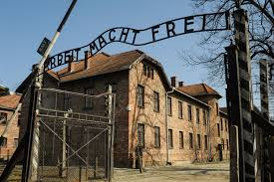
Indeed this experience though taught me the importance of keeping the memory alive of the 6 million Jews who were killed. But also to act whenever I see the chance of history repeating itself. Life is precious and it was painful to realise that others never got the chance that I was given. A chance to life.
Harry Cooper
We arrived by coach to Auschwitz I.
A bank of human hair shaved off thousands of women, found in bundles by the Soviet army as it liberated the camp, to be sent off to be made into rugs for the German army, now behind glass windows. A mountain of brown and black leather shoes, a sprinkling of red women’s shoes. None matching, also behind glass windows. A smaller mound of children’s shoes. A tangled mess of spectacles. A wall of prosthetic limbs. Behind glass windows. I saw the hair and the shoes of thousands. The hair and shoes of a million have gone.
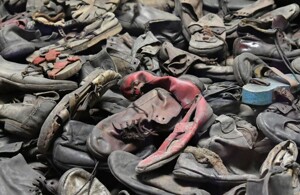
Images of Franciscan priests being led to their deaths by grinning Nazi soldiers. A wall of headshots of children, terrified and crying, some of them defiant, mostly in shock, taken before they were tested on and tortured by Dr Mengele. All of them dead within days of the photos being taken. The deep grooves in the concrete staircases in the barracks where thousands had dragged themselves up and down, which we now walked up and down.
Scratch marks near the ceiling of the gas chamber, presumably reflecting the height and depth of the heaps of bodies beneath those who hadn’t already choked to death on Zyklon B. Two huge black furnaces where the bodies were burnt.
The house of Commandant Hess and his family, a few hundred yards from the entrance to the gas chamber. He wanted to live there so he could see the Jews stumble into the gas chamber. None of the Nazis working there were forced to. All of them chose to.
The site of where St Maximilian Kolbe, a Catholic priest, stepped forward to give his life in the place of a man who begged for his life, who would live until 1993. I would like to say I would have done the same thing in his position, but I think it unlikely.
Then to Auschwitz II-Birkenau.
Huge and dead. Empty of living people but crowded with the souls of a million murdered. The moment that I can’t get out of my head: the endless expanse of ruins that had once been sheds where the inmates were kept, those who weren't gassed immediately, the dark treeline in the distance, a forest where tens of thousands had been buried in mass graves before the burning began, train tracks slashing through the ground. No colour, just grey mud. Dark, heavy clouds, the sun vanishing. No noise, except the guide speaking and our trudging, some gusts of freezing wind. A distant banging that sounded like a drum. The preserved wrecks of the two main crematoria where hundreds of thousands were burnt and destroyed.
The replica sheds which housed 900 souls each reminded me of the sheds I drove by on the way to school in Norfolk, where pigs were kept. The knowledge that we walked along paths where hundreds of thousands had walked. The knowledge that in the mud under my boots, in the trees around me, in the air I was breathing were the ashes of a million dead bodies.
I walked with my students Maria, a Romanian girl, and Melanie, whose Bolivian parents arrived illegally in the UK on boats. We walked in silence, occasionally talking about the best approach to revise for their A-levels. It was a privilege to be walking with them. I likely will never see them again after June. I would like to think that I would die for them as St Maximilian did for that man. I don’t know if I would.
A few months ago I was given a small wooden cross by a woman I met at Farm Street Church. She said she felt she had to give it to me when she met me. She had placed it on the places of Christ’s birth, death and resurrection in the Holy Land. I like to think there are tiny atoms of Jesus’ body on it. I held it tightly the whole day.
The rabbi standing in front of a wall of photos taken before the war of some of the men and women who had been murdered. Telling us that God had wept with his people, that He was with them, always. The blowing of the shofar, his singing of a prayer in Hebrew, his desperation. Psalm 23.
Industrial, mechanised, carefully planned mass murder. Evil. It is real and I feel it clinging to me today.
We got on the coach and left. A million stayed.